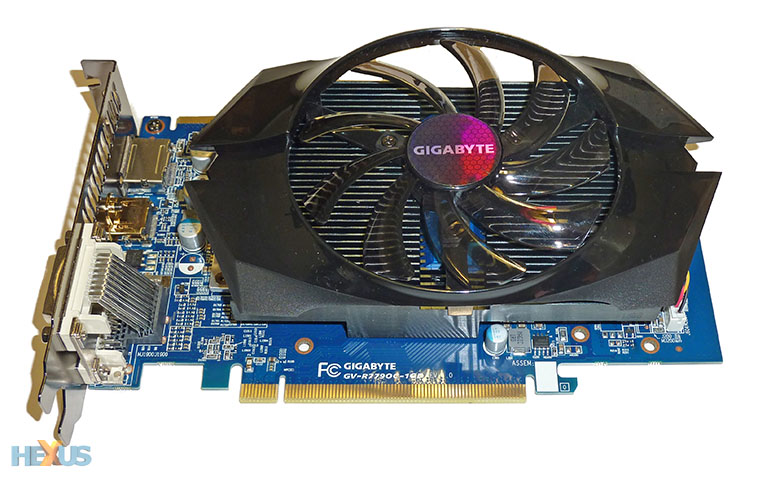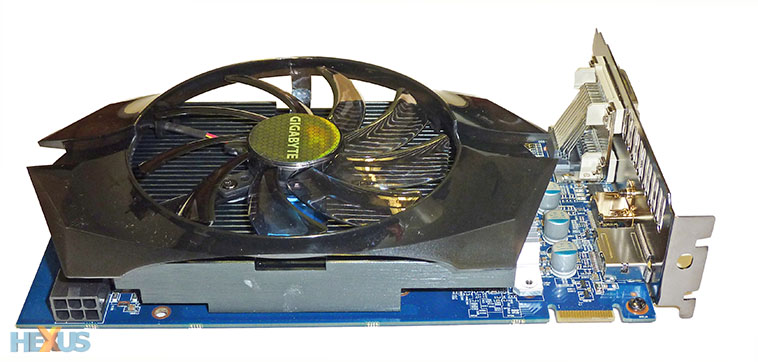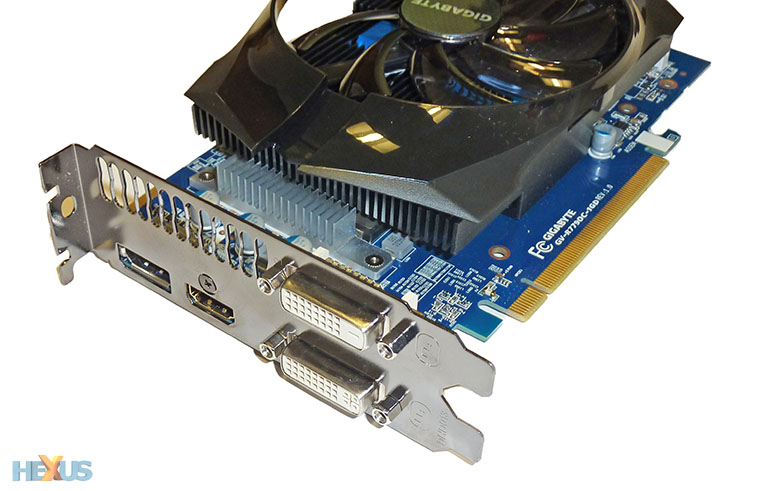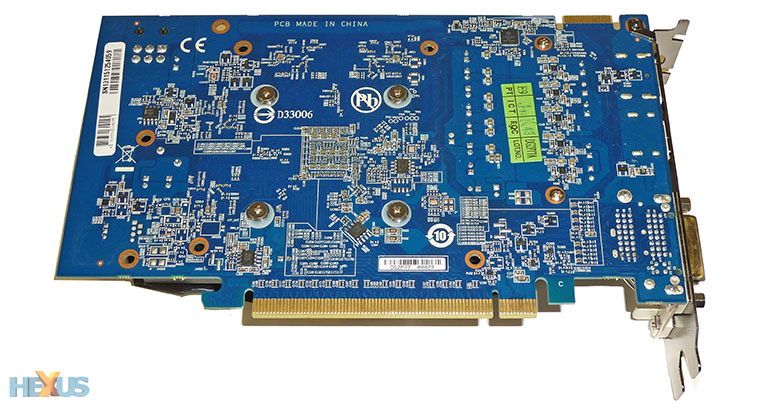Gigabyte HD 7790 OC
Gigabyte uses a shorter PCB, albeit by 20mm, and continues to harness the so-called Triangle Cool Fan Technology for the heatsink. The 100mm fan overhangs the upper part of the PCB and looks rather out of place for a card of this size.
The heatsink is bolted on via four screws that go through the PCB and to the other side. It's also used on other Gigabyte Radeon cards and broadly equivalent NVIDIA GPUs. The actual heatsink is perhaps the most important part of the card; it's the cooling performance, acoustics and temperatures that will differentiate one HD 7790 from another.
Gigabyte's core speed of 1,075MHz matches the other two cards, representing a 7.5 per cent overclock over standard.
The nature of the cooling, much like Sapphire's, is open air. But given the relatively low TDP (85W maximum) and large cooler, we reckon there won't be too much heat exhausted into the chassis. Rather than focus on performance, we'd be more encouraged if Gigabyte had a single-slot HD 7790 in its arsenal.
Outputs are the same as the Sapphire card, but, should you so wish, the Gigabyte card cannot run the three right-hand connectors, at the same time, without additional adapters.
Attaching and removing the cooler is very straightforward on this model. Simply undo the four screws and away comes the heatsink.
The smallest PCB means the smallest of the three HD 7790 cards. We're not entirely sure where Gigabyte gets the Triangle Cool Technology name from; the heatsink is basic and previously used on the less-powerful HD 7770 GPU. Gigabyte uses the same four Hynix H5GQ2H24AFR chips as Sapphire and PowerColor. Our educated guess is that Gigabyte's card is the cheapest to produce, by dint of its smaller PCB and cooler.














